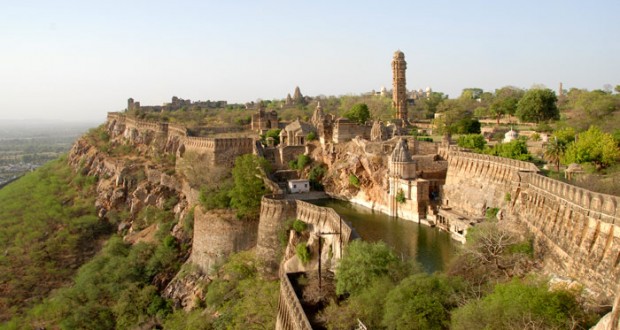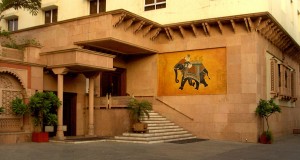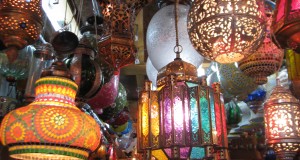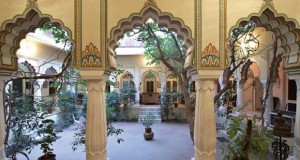Review Overview
4
Summary : The ancient Mewar capital of Chittorgarh (or Chittor) represents the quintessence of Rajput valour and chivalry.
The ancient Mewar capital of Chittorgarh (or Chittor) represents the quintessence of Rajput valour and chivalry. Three times in its long and bloody history, faced by overwhelming odds, its menfolk dressed up in the saffron robes of martyrdom and rode out to certain death, while its women walked into the sacrificial bonfire and committed jauhar or mass ritual suicide. Carved marble memorials to heroes and sati victims litter the broken ruins, making this oldest and most famous of all Rajasthani fortress towns perhaps the closest to the warrior Rajput’s heart.
A great deal of Rajasthan’s history centres round Chittor. The origin of this powerful hilltop fort, situated on a 180-m high precipice, is shrouded in romantic mystery. The legend goes that it was a fort since prehistoric times, having been founded by the hero Bhim, one of the five Pandava brothers of the Mahabharata epic. Two Lower Palaeolithic sites have been excavated at the nearby River Berach. But the fort probably only dates back to the 7th century AD. In the year 734 it was discovered as a strategic site by Bapa Rawal, founder of the Mewar dynasty, and made his capital. It was Bapa Rawal who thought up the clever idea of calling himself the dean (minister) of Shiva, which sidestepped any possible accusation of tyranny and made possible the unity of the (clannish) Rajputs under a single leader. 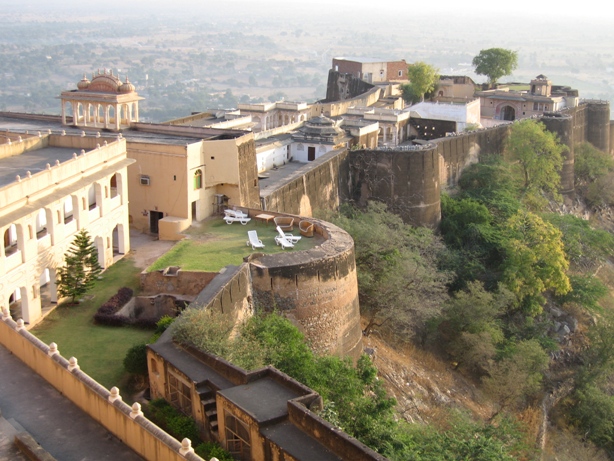
Much later, after a long period of steady growth, in 1303 Chittor was suddenly attacked and sacked by the ruthless Ala-ud-din Khilji, Sultan of Delhi, who fell in love with its beautiful princess Padmini (one fleeting glance of her face in a mirror was all it took) and determined to have her, whatever the cost. He walked in on an empty fort—Padmini having committed jnuhar with all her royal ladies. Ala-ud-din ruled Chittor for just 23 years. Then the valorous nobleman Hamir retook it for the Rajputs, earning himself and all his descendants the ‘premier’ title of Maharana (at Independence in 1947, there were 532 Rajahs and Maharajahs in India, but only one Maharana).
Chittor’s glorious revival had one unfortunate repercussion: now confirmed as the ruling seat of the Rajputs, it became the lodestone attracting every prospective invader of Rajasthan. Only when they had conquered this city, could they lay any real claim to rulership of the state. For a time Chittor met all attacks successfully—it was quite impossible to storm, and its everlasting water supply (from the fort’s natural springs) meant that besieging enemies had to camp out for months on the hot, bone-dry plains waiting for its food to run out. But then came two more crippling defeats. First, in 1535, at the hands of Bahadur Shah, the Sultan of Gujarat (a disastrous engagement: 32 000 Rajput warriors slain, 13 000 of their women went up in jauhar smoke); then, in 1567, by Akbar, the Mughal emperor (and the orange saffron of 8000 more warriors bled red). It was shortly after this third and final sac of Chittor that Maharana Udai Singh decided enough was enough, and moved 110 km (69 miles westward to found the new Rajput capital of Udaipur.
Today, while a few hundred families still live on up in the fort, Chittorgarh is just another of India’s deserted ghost cities—a silent, lonely expanse of arches, gates memorials and cenotaphs which stand testament to a proud, heroic people to whom honour and valour meant more than life itself.
WHAT TO SEE Apart from the fort, there’s little to see or do. So arrive early from Udaipur, see the sights by auto-rickshaw or by the tourist office’s morning tour (8 am-11.30 am), at arrange to be back in time for the afternoon bus on to Ajmer or return to Udaipur. Few people stay overnight in Chittor.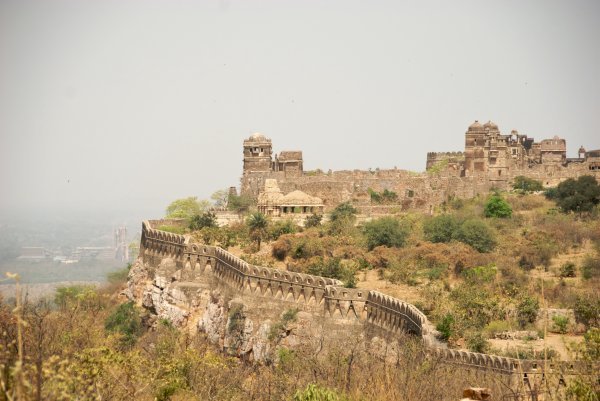
Fort Tour (3/4 hours) Cana Kumbha Palace-Fateh Prakash Palace-Tower of Victory- Gaumukh Reservoir-Padmini’s Palace-Tower of Fame The ascent up to the fort, which contains all Chittor’s interest points, is via a steep, winding 1-km (‘5-mile) long road. This takes you through seven gateways up to the western (main) gate of Ram Pol at the top. Ask your driver to stop on the way up at the Hero’s Chhatris, marking the points where Jaimal and Kalla, two valorous victims of the 1567 conflict with Akbar, fell fighting.
Within the fort, see first the 15th-century Rana Kumbha Palace, with its Shiva temp le, horse and elephant stables, and vaulted cellars believed to be site of Padmini jnuhar. In the more modern Fateh Prakash Palace opposite, visit the small and interesting museum with its collection of archaeological treasures recovered from the fort.
A short distance east, you’ll find the Tower of Victory (Vijay Stambh), erected between 1458 and 1468 to commemorate Rana Kumbha’s victory over the Muslim and Gujarat rulers in 1440. Climb this finest remainder of Rajput glory—nine storeys ot noble yellow-sandstone, rising 37 m high—for nice views over the fort area. Outside, to the right, is the grim Mahasati area where ranas of olden days were cremated (there are several satin stones and tablets here). Straight ahead, and down some steps, is the Gaumukh Reservoir, a deep tank full of leaping fish situated right at the edge of the cliff. It takes its name from the carved cow’s mouth which feeds the tank a constant supply of fresh spring water.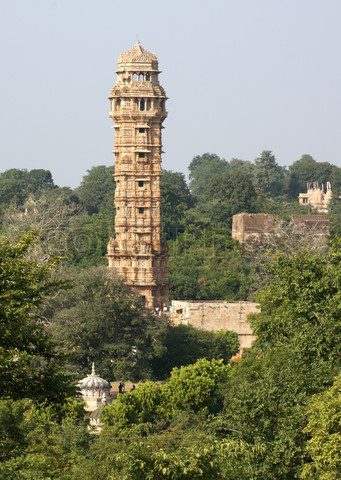
At Puimini’s Palace, up on the eastern end of the fort, you can wander through the green gardens and flower-bordered courtyards to the balcony where Ala-ud-din got his fatal glimpse of the lovely Padmini, her face reflected in a silver mirror as she promenaded in the small water-bound island pavilion opposite. Then proceed by the Deer Park and the Suraj Pol to the Tower of Fame (Kirti Stambh), dedicated to Adinath, first of the Jain tirthankars. It was built in the 12th century (making it older than the Tower of Victory) by a wealthy Jain merchant. Covered in decorative nude figures of the Jain pantheon, it is a digambara or ‘sky-clad’ monument, and rises to a height of 22 m. You can climb the seven storeys to the top, for fine views.
WHERE TO STAY If necessary, stay at the RTDC Panna Tourist Bungalow (tel 3238), close to the railway statition, with air-cooled and air-conditioned rooms from Rs250. The nearby Government Circuit House, Udaipur Rd, has far more character, but is usually reserved for Government officers. When it isn’t, this lovely old-style palatial building lets out clean deluxe’ quarters to travellers at cheap rates (Rs75-125). Janta Avas Grah (tel c/o 3238), at the tourist office, has spartan cells (Rs50). It will be difficult to find anything any better. EATING OUT An unappetising prospect. Good, cheap vegetarian fare at the new Rituraj restaurant, near the bus-stand. Nice chilled beers at the RTDC Beer Shop, outside the tourist office. Basic, uninteresting food at Panna’s restaurant, or at the Railway Canteen. In restaurants, as in hotels, Chittor seems resigned to tourists flitting in and out, with no desire to stay overnight.
GENERAL INFORMATION The tourist office (tel 9) is in the Janta lodge, near the railway station. Open H am-12 noon and 3 pm-6 pm (except Sundays). In practice, the tourist officer is often at the Panna Tourist Bungalow. You might as well go there first anyway Panna has better infornation and sells the conducted tours of the fort (8 am-11.30 pm, 3-6 pm daily, starting at 7 am and 4 pm respectively in summer; Rs15). As for English-speaking guides, you can pick up one of these (a useful companion for your tour) at the main entrance gate of the fort, outside the Archaeological Survey office. Guides all charge a fixed rate (currently about Rs40 per hour) and are often worth it.

